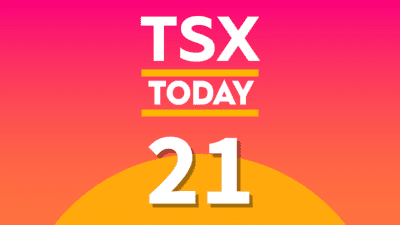When it comes to planning for retirement, Canadians have several income sources to rely on. The Old Age Security (OAS) and Canada Pension Plan (CPP) serve as government-backed income streams, while Registered Retirement Savings Plan (RRSP) withdrawals can offer another layer of financial cushioning.
However, these traditional options often come with limitations or tax implications that could reduce your take-home amount. Enter the Tax-Free Savings Account (TFSA) — a highly flexible, tax-efficient investment vehicle that can serve as a powerful supplement to your retirement income.
Today, I’ll walk you through my exchange-traded fund (ETF) pick designed to help you create a steady $500 monthly income from your TFSA. With tax-free withdrawals and the potential for consistent growth, a well-managed TFSA could be your secret weapon for a more comfortable retirement.
Picking the right assets
When it comes to generating a steady income stream from your TFSA, yield is undoubtedly the name of the game. However, traditional dividend stocks might not always make the cut. One reason is that their yields are generally smaller, especially for well-established, blue-chip companies.
Additionally, high yields in single stocks can sometimes signal underlying problems, such as business instability or uncertain cash flows. Furthermore, many dividend stocks pay out on a quarterly basis, which isn’t ideal if you’re looking for consistent monthly income.
That’s why I favour covered call ETFs as a more fitting solution for this income generation strategy. Simply put, a covered call ETF holds a basket of stocks and sells (or “writes”) call options on those stocks. In doing so, the ETF sacrifices some future upside potential in the stock prices for immediate income in the form of option premiums.
While the share price of a covered call ETF might not appreciate dramatically over time, it does offer a consistent monthly income, often at a higher yield compared to standard dividend-paying stocks. By converting potential future gains into immediate cash, you can generate a reliable revenue stream to meet your monthly financial needs — ideal for a retirement setting.
An ETF example
I like BMO Canadian High Dividend Covered Call ETF (TSX:ZWC). This ETF currently holds 96 Canadian dividend stocks and sells covered calls on them. You therefore get both the dividends from the stocks and the income from the options premiums.
As of September 15, ZWC is paying a 7.78% annualized distribution yield. Like many covered call ETFs, ZWC also makes monthly dividend payments.
To obtain a $500 monthly income with their TFSA, an investor would have to invest $76,037 in ZWC, assuming its current monthly dividend payout remains consistent moving forward:
| COMPANY | RECENT PRICE | NUMBER OF SHARES | DIVIDEND | TOTAL PAYOUT | FREQUENCY |
| ZWC | $16.73 | 4,545 | $0.11 | $499.95 | Monthly |
That being said, investing that large sum into ZWC isn’t the best for diversification, given that it only holds dividend stocks. Consider augmenting ZWC with some Canadian growth stock picks (and the Fool has some great suggestions for those below).








